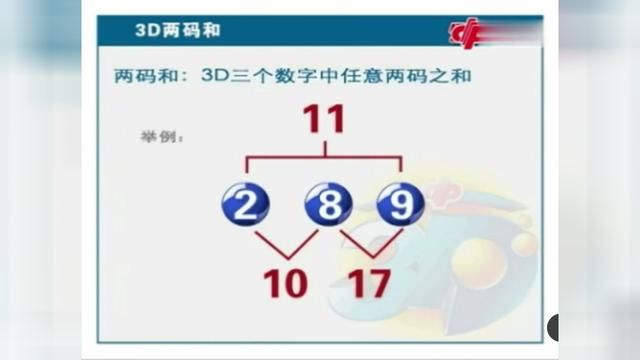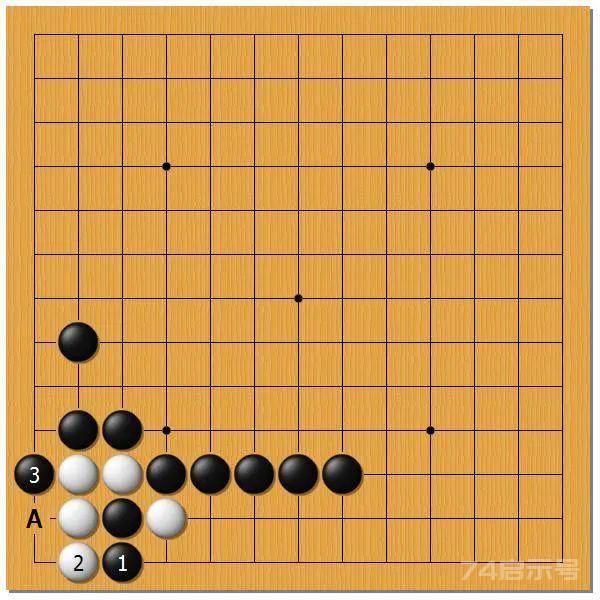初中英語語法知識點整理總結(超詳細)
- 教育
- 2年前
- 181
初中英語語法知識點整理總結
一、 詞類、句子成分和構詞法:
一). 詞類:英語詞類分十種:
名詞(n.) |
表示人、事物、地點或抽象概念的名稱 |
boy, morning, bag, ball, class |
代詞(pron.) |
主要用來代替名詞 |
who, she, you, it |
形容詞(adj..) |
表示人或事物的性質或特征 |
good, right, white, orange |
數詞(num.) |
表示數目或事物的順序 |
one,two,first,second,third |
動詞(v.) |
表示動作或狀态 |
am, is,are,have,see |
副詞(adv.) |
修飾動詞、形容詞或其他副詞,說明時間、地點、程度等 |
now, very, here, often, slowly |
冠詞(art..) |
用在名詞前,幫助說明名詞 |
a, an, the |
介詞(prep.) |
表示它後面的名詞或代詞與其他句子成分的關系 |
in, on, from, above, behind |
連詞(conj.) |
用來連接詞、短語或句子 |
and, but, before |
感歎詞(interj..) |
表示喜、怒、哀、樂等感情 |
oh, well, hi, hello |
二). 句子成分:
英語句子成分分七種:主語、謂語、賓語、定語、狀語、表語、賓語補足語。
1、主語:句子的主體,全句述說的對象。回答是“誰”或者“什麼”。一般由名詞、代詞、不定式、動名詞或從句擔當,位于句首。
如:The boy needs a pen.
Smoking is bad for you = To smoke is bad for you
2、謂語:說明主語的動作或狀态。回答“做(什麼)”。由動詞或系動詞加表語擔任,常置于主語後。
如:The train leaves at 6 o’clock.
She is reading.
3、賓語:表示動作的對象。回答做的是“什麼”。一般由名詞或代詞擔當,常置于謂語後。
如:He won the game.
He likes playing computer.
注意:
1) 有些及物動詞帶有兩個賓語,一個指物(直接賓語),一個指人(間接賓語)。
間接賓語一般放在直接賓語前面。
如:He wrote me a letter . (他給我寫了一封信)
2) 有時可把介詞to或for加在間接賓語前構成短語,放在直接賓語後面,來強調間接賓語。
如:He wrote a letter to me . (他給我寫了一封信)
4、表語:用以表述主語的特征、狀态、身份等。回答是“什麼”或者“怎麼樣”。一般由名詞或形容詞擔任,置于系動詞或be動詞之後。
如:He is a student. We are tired.
注意:除了be 系動詞外,還有一些動詞也可以用作系動詞,
1)表感官的動詞: feel, smell, taste, sound, look, appear, seem 等。
2)表轉變變化的動詞: become, get, grow, turn, go等。
3)表延續的動詞: remain, keep, hold, stay, rest等。
5、定語:對名詞或代詞起修飾、限定作用的詞、短語或句子。
如:The black bike is mine.(形容詞)
The boy in blue is Jim.(介詞短語)
I have nothing to do today.(動詞不定式)
注意:
1)當定語修飾不定代詞如:nothing , anything , everything , something等時,定語要放在其後作後置定語。例如: I tell him something interesting.
2)不定式、短語或從句作定語時,也放在被修飾的名詞之後。
例如:The boys who are in the room are playing games.
6、狀語:用以修飾動詞、形容詞、副詞及全句,通常由形容詞、代詞、數詞等擔任位置靈活。
1)修飾形容詞或副詞時,通常位于被修飾的詞之前;
如:I am very sorry.
2)表示時間、地點、目的的狀語一般位于句子兩頭,強調時放在句首。
如:In order to cheer him up, I told him the truth.
They are writing English in the classroom.
3)一些表示不确定時間(如:often)或程度(如:almost)的副詞狀語通常位于be動詞、助動詞、情态動詞之後,動詞之前。
如:We often help him.
He is always late for class.
7、補語:補充說明賓語怎麼樣或幹什麼,。由n./adj./介賓/分詞/不定式等擔任。常位于賓語後。
如:He made me sad.(形容詞)
She asks me to take an umbrella.(不定式)
The war made him a soldier.(名詞)
I find him at home.(介詞短語)
I saw a cat running along the wall.(分詞)
8、同位語:通常緊跟在名詞、代詞後面,進一步說明它的情況, 它可以由名詞、代詞、名詞性短語或從句充當。
如:Tom, our monitor, is a handsome boy.
I myself will do the experiment.
She is the oldest among them six.
一). 構詞法:
英語構詞法主要有:合成法、派生法和轉換法。
1、合成法:如:spaceship, headache, basketball, playground等等。
2、派生法:
(1)派生名詞:①動詞+er/or ②動詞+ing ③動詞+(t)ion ④形容詞+ness ⑤其他,如:inventor, learner, swimming, congratulation, kindness, carelessness, knowledge
(2)派生形容詞:①名詞+y ②名詞+ful ③動詞+ing/ed ④friendly ⑤dangerous ⑥Chinese; Japanese ⑦English ⑧French ⑨German ⑩國名+(i)an 如:snowy, sunny, hopeful, beautiful, interesting, follwing, daily(每日的),nervous, delicious
(3)派生副詞:①形容詞+ly ②其它,如:slowly, angrily, full→fully, good→well, possible→possibly等等。
3、轉換法:
(1)形容詞→動詞,如:dry(幹燥的)→dry(弄幹), clean(幹淨的)→clean(打掃,弄幹淨),等等。
(2)動詞→名詞,如:look, walk, rest, work, study, swim, go, talk等等。
(3)名詞→動詞,如:hand(手)→(傳遞),face(臉)→(面對)等等。
(4)形容詞→副詞,如:early→early, fast→fast等等。
(5)副詞→連詞,如:when(什麼時候)→(當……時候),等等。
(6)介詞→副詞,如:in(到……裡)→(在裡面;在家),on(在…上)→(進行,繼續)。
一、 名詞:
一). 名詞的數
1、 可數名詞
一般是個體名詞,如a boy(一個男孩),集體名詞a family(一個家庭),可數名詞在句子中必須有頭或是有尾,頭就是a,one,an或物主代詞;尾就是複數形式。
1) 規則複數變化形式:
情況 |
構成方法 |
讀音 |
例詞 |
一般情況 |
加-s |
清輔音後讀/s/,濁輔音讀/z/ |
book→books key→keys |
以o結尾的表示有生命的名詞 |
加-es |
讀/z/ |
tomato→tomatoes potato→potatoes |
以s,sh,ch,x等結尾的名詞 |
加-es |
讀/iz/ |
bus→buses watch→watches box→boxes |
以ce,se,ze,(d)ge等結尾的名詞 |
加-s |
讀/iz/ |
case→cases orange→oranges |
以“輔音字母+y”結尾的名詞 |
變y為i,再加-es |
讀/z/ |
family→families party→parties |
以f或fe結尾的名詞 |
變f或fe為v,再加-es |
讀/z/ |
knife→knives leaf→leaves |
2) 不規則複數變化形式:
變内部元音字母 |
foot-feet, goose-geese, tooth- teeth, man-men |
詞尾加en |
child-children, ox-oxen |
單複數同形 |
fish, sheep, deer, means, Chinese, yuan, jin, li |
3) 特殊的複數形式:
a) 集體名詞:集體名詞不能運用具體的數字修飾,下面的集體名詞,不能用a,one,two等修飾,隻能在其前加the表示“全體……”。
the police 警察(指全體警察) the English 英國人(指全體英國人)
b) 複合名詞
a woman teacher—women teachers女教師 an Englishman—Englishmen英國男子
a brother-in-law—brothers-in-law 小叔、大伯 a grown-up—grown-ups 成人
2、 不可數名詞
專有名詞:NBA美籃協會 Michael Jackson 邁克傑克遜 the West Lake 西湖
物質名詞:液體:milk water tea coffee juice oil(油)
肉類:beef chicken mutton pork
天氣:weather rain snow wind light 光
其他:news(新聞,消息) bread(面包)
抽象名詞:fun love luck duty kindness善良happiness幸福progress進步
【注意】有些不可數的物質名詞有複數形式,但表達不同意義。
tea— different kinds of teas 不同種類的茶
food 食品 — all kinds of foods 各種各樣的食品
fruit 水果 — all kinds of fruits 各種各樣的水果
glass 玻璃— a glass 一個玻璃杯 — glasses 眼鏡、玻璃杯
一). 名詞的格
1、表示有生命的東西的名詞所有格。
①一般在單數或複數名詞後加-'s。如:Tom's chair; the children's bedroom
②以-s結尾的複數名詞後直接加“'”。如:the students' reading room
③并列名詞 表示各自所屬時,在兩個名詞之後都加’s;w
表示共同所屬時。在最後一個名詞後加's。
如:Tom and Mike's father 湯姆和邁克的父親(倆人共有的父親)
Tom’s and Mike’s fathers 湯姆的父親和邁克的父親(倆人各自的父親)
④表示店鋪,某人的家,私人開的診所、餐館等,其所有格後的名詞(如shop等)可以省略。
如: at Tom’s 在湯姆家裡 at the tailor's在裁縫店 at a chemist's在藥店
2、表示無生命的東西的名詞的所有格,常常用“of+名詞”的形式。
如:the covers of the book(s)書的封面 a photo of my family一張我家的全家福
【注意】:
①表示有生命東西的名詞,如果名詞較長或名詞的定語較長.也可用“of+名詞”的形式。
如:the works of Lu Xun, Lao She and Mao Dun
the founding of the People's Republic of China 中華人民共和國的成立
②表示時間、距離、集體、城市、國家、團體、機構及某些慣用語中的名詞,可用-'s。
如:yesterday's newspaper昨天的報紙 five minutes’ drive開車五分鐘的路程
③of短語所表示的是修飾名詞的具體内容或材料。
如: a map of the world 世界地圖 a ring of gold 金戒指
④某些習慣用法中of短語不能替換's結構。
如: teachers' office 教師辦公室 children's book 兒童讀物
二、 代詞:
英語中代詞有人稱代詞、物主代詞、反身代詞、指示代詞、疑問代詞、關系代詞、不定代詞。
一). 人稱代詞:
人 稱 |
單 數 |
複 數 |
||
主 格 |
賓 格 |
主 格 |
賓 格 |
|
第一人稱 |
I |
me |
we |
us |
第二人稱 |
you |
you |
you |
you |
第三人稱 |
he she it |
him her it |
they |
them |
通 稱 |
one |
ones |
1、主格用來做句子的主語、表語。
如: I often go shopping on Sundays.(星期天我常去購物)
Are they from Brazil?(他們是巴西人嗎?)
That’s it.(就那麼回事) / It’s he!(是他!)
2、賓格用來做及物動詞或者介詞的賓語
如:Who teaches you English this year?(今年誰教你們的英語?)
Help me!(救救我!) / We often write letters to her.(我們常給他寫信)
3、人稱代詞作表語或者放在比較狀語從句連詞than或as之後時,可以用主格形式,也可以用賓格形式,口語中大多用賓格。如: –It’s I/me.(是我。)
三個不同人稱同時出現,或者主語中包含“我”時,按照“you→he→I”的順序表達。
如:Both he and I are working at that computer company.(我和他都在那家電腦公司上班) –Who will go there?(誰要去那兒?) –You and me.(你和我)
4、人稱代詞it除了可以指人指物之外,還可以表示“時間、天氣、溫度、距離、情況”等含義,此外還可以作“非人稱代詞”使用,替代作主語或者賓語的不定式、動名詞或者名詞性從句。
如:--What’s the weather like today?(今天天氣怎樣?)—It’s fine.(天氣晴好) /
--What’s the time?(幾點啦?) –It’s 12:00.(12點)
It’s a long way to go.(那可要走好長的路) / It took him three days to clean his house.
It is very clear that the public want to know when these men can go into space.(很顯然,公衆想知道這些人什麼時候能進入太空)
We found it very difficult to learn a foreign language well.(我們發覺要學好一門外語是非常困難的)
二). 物主代詞:
人 稱 |
單 數 |
複 數 |
||
形容詞性 |
名詞性 |
形容詞性 |
名詞性 |
|
第一人稱 |
my |
mine |
our |
ours |
第二人稱 |
your |
yours |
your |
yours |
第三人稱 |
his her its |
his hers its |
their |
theirs |
通 稱 |
one's |
1、形容詞性物主代詞隻能作句子中名詞的修飾語,後面要跟名詞。
如:Is that your umbrella?(那是你的傘嗎?) / I often go to see my aunt on Sundays.
2、名詞性物主代詞相當于名詞,既代替事物又表明所屬關系,在句子中往往獨立地作主語、賓語或者表語,後面千萬不可以跟名詞。
如:This is your cup, but where is mine?(這是你的杯子,可我的在哪兒?)
Your classroom is very big, but ours is rather small.(你們教室很大,我們的相當小)
3、“of + 名詞性物主代詞”稱為雙重所有格,作定語時放在名詞的後面。如:
A friend of mine came to see me yesterday.(我的一個朋友昨天來看我了) (指若幹朋友中有一個。)
[試比較] My friend came to see me yesterday.(我的朋友昨天來看我了)(指我的那個特定的朋友)
三). 反身代詞:
人 稱 |
單 數 |
複 數 |
第一人稱 |
myself |
ourselves |
第二人稱 |
yourself |
yourselves |
第三人稱 |
himself herself itself |
themselves |
通 稱 |
oneself |
1、反身代詞在句子中作賓語表示反射(指一個動作回到該動作執行者本身)。
如:Don’t play with the knife, you might hurt yourself.(不要玩刀子,那會割傷你的)
2、在句子中作同位語表示強調(即用來強調名詞或代詞的語氣)。
如:The story itself is good. Only he didn’t tell it well.(故事本身是好的,隻是他沒有講好)
四). 不定代詞:
常見的有some,any,all,none,both,either,either,each, other,another,much,many,few,little,one等
五). 指示代詞:
常見的有this,that,these,those
1、 指示代詞既可以單獨使用做句子的主語、賓語或表語,也可以作定語修飾名詞。
Who |
whom |
whose |
which |
what |
誰(主格) |
誰(賓格) |
誰的 |
哪個,哪些 |
什麼 |
如:What’s this?(這是什麼?)
That model plane is made of plastic.(那隻模型飛機是塑料做的)(被動句)
Remember never to do such things.(記得永遠不要做這樣的事情)
Do the same as the teacher tells you. (按老師說的做)
---Who is it?(是誰?) ---It’s me!(是我!)
【注意】名詞或代詞作主語時和謂語之間的單複數的一緻問題:
1. 主語和謂語基本保持單複數的一緻,即:主語是可數名詞單數或不可數名詞時,謂語動詞用單數形式:
如:The computer was a great invention.(計算機是個了不起的發明)
The water in the glass is very cold.(玻璃杯裡的水很冷)
2. 集體名詞(如family, class, team, group, row, police, school等)做句子主語時,
3. 如果表示整體概念,則謂語用單數形式,
如:Class Three is a very good class.(三班是好班)
4. 如果表示其中的所有成員時,則謂語用複數形式,
如:Class Three have a map of China.(三班有張中國地圖)
5. Chinese, Japanese, fish, sheep, people等表示單個時謂語用單數,表示許多時,謂語用複數。
如:There is a sheep in the yard.(院子裡有隻綿羊)
6. There are some sheep in the yard.(院子裡有一些綿羊)
7. maths, news等雖然有s結尾,但不是複數,因此謂語仍用單數:The news is very exciting. (這個消息令人興奮)
8. glasses, shoes, socks, trousers, gloves等名詞往往用複數形式,謂語用複數。The trousers are very cheap and I want to take them.(褲子很便宜,我想買)
9. a lot of 後跟名詞複數時謂語用複數形式,跟不可數名詞時謂語用單數形式。如:A lot of students are playing baseball now.(現在有許多學生在打壘球) A lot of time was wasted on that work.(大量的時間花在了那個工作上)(被動句)
10. and 連接兩個名詞做主語時,謂語原則上用複數,但是兩個名詞若構成一個整體事物時,謂語則用單數。
如:The teacher and his son are picking apples now.(老師和他的兒子在摘蘋果) Fish and chips is very famous food. (魚和薯條是一種出名的食品)
11. there be 句型中be的單複數一般由靠近的名詞決定。
如:There is a table and four chairs in the room.(房間裡有一張桌子和四張椅子)
12. 用both…and…連接兩個事物做主語時,謂語一般用複數。
如:Both you and I are required to be here tomorrow.(你和我明天要求都來)
13. 主語中含有with的短語時,謂語單複數由with之前的人物決定。
如:A woman with a 7-year-old child was standing at the side of the road. (一名婦女帶着一個七歲的孩子(當時)就站在路邊)
14. either…or…或者 neither…nor…連接兩個人物做句子主語時,謂語采用就近原則。
如:Either you or he is right.(要麼是你對,要麼是他對/你和他有一個人是對的)
Neither you nor I am going there.(你和我都不打算去那裡)
15. 表示一段時間或長度概念的複數名詞做主語時,謂語一般用單數。
如:Two months is not a short time.(兩個月不是個短時間)
Two thousand kilometers is quite a long distance(距離).(兩千千米是相當長的一段距離)
三、 數詞:
分類:數詞有基數詞和序數詞兩種。英語的數詞可以作句子的主語、賓語、表語和定語。
一). 基數詞:表示數目的詞叫基數詞。
1、 英語中常用的基數詞有:
1 2 3 4 5 6 7 8 9 10 11 12 |
one two three four five six seven eight nine ten eleven twelve |
13 14 15 16 17 18 19 |
thirteen fourteen fifteen sixteen seventeen eighteen nineteen |
20 30 40 50 60 70 80 90 100 |
twenty thirty forty fifty sixty seventy eighty ninety one(a) hundred |
23 35 101 |
twenty-three thirty-five one hundred and one |
1000→one(a) thousand,
10000→ ten thousand,
100000→one hundred thousand ,
1000000→one million,10000000→ten million,
100000000→one hundred million,
108→one hundred and eight, 146→one hundred and forty-six,
500→five hundred , 1001→one thousand and one, 1813→one thousand eight hundred and thirteen.
[注意]:
(1)百位與十位之間要加and;十萬位和萬位,億位和千萬位之間通常也要加and。
(2)英語用千、百萬等單位計數,大數字從右向左看, 每隔三位劃一逗号,倒數第一個逗号之前要用thousand,倒數第二個逗号之前要用million,倒數第三的逗号之前要用billion表示。
(3) hundred、 thousand、 million作數詞時,不用複數,前面可以加上one, two, …等其它數詞。用作名詞時複數表示“成…上…”,後面必須要有of,前面可以加上some,many,several等詞。如:five hundred(五百), hundreds of(成百上千的), ten thousand(一萬), thousands of(成千上萬的), millions of(成百萬的)
一). 序數詞:表示順序的數詞叫序數詞。
1、英語的序數詞基本變法:
(1) 一般在基數詞後加th,
(2)-ve結尾的改為-fth,
(3)-ty結尾的改為-tieth,
(4)熟記特殊詞。
2、序數詞如下:
1st 2nd 3rd 4th 5th 6th 7th 8th 9th 10th 11th 12th |
※first ※second ※third fourth fifth sixth seventh eighth ninth tenth eleventh twelfth |
13th 14th 15th 16th 17th 18th 19th |
thirteenth fourteenth fifteenth sixteenth seventeenth eighteenth nineteenth |
20th 30th 40th 50th 60th 70th 80th 90th 100th |
twentieth thirtieth fortieth fiftieth sixtieth seventieth eightieth ninetieth one undredth |
21st 22nd 23rd 35th 101st |
twenty-first twenty-second twenty-third thirty-fifth one hundred and first |
1000th→one thousandth, 1000000th→one millionth.,
第703→the seven hundred and third,
第5480→the five thousand four hundred and eightieth.
3、注:
(1)兩位以上的序數詞僅個位數部分用序數詞,其餘部分仍用基數詞。如:thirty-sixth,
(2) 使用序數詞時一般加定冠詞the. 如:I’m in the third grade.
(3) 序數詞作“幾分之幾”講時,有複數形式。如:1/5→one fifth ; 2/3→ two thirds ; 4/7→ four sevenths ; 1/2→ a half ; 1/4→a quarter ; 3/4→ three quarters ; 50%→ fifty hundredths ( fifty per cent).
4、數詞的用法:
1) 表示年份:2002: twenty thousand and two ; 1976 : nineteen seventy-six.
2) 表示日期: 12月1日: Dec.1st或the first of December;2002年11月8日: Nov. 8th, 2002.
3) 表示時刻: 5:15→ five fifteen或a quarter past five ; 8:30→ eight thirty或half past eight ; 10:45→ ten forty-five或a quarter to eleven.
4) 表示編号:Room 105→Room one 0 five; Bus No.13→Bus Number Thirteen; P.5→Page Five; Tel.No.7658659→Telephone Number seven-six-five-eight-six-five-nine
5) 小數的讀法:5.7→ five point seven, 0.16 →zero point one six.
6) 6、“半”的表達: 1/2→half, 半小時→half an hour, 1.5小時→one and a half hours或one hour and a half.
7) 序數詞前面加the時,表示順序,加a/an時表示“再一、又一”。如:The third lesson is rather difficult.(第三課相當難)/ Shall we read the text a third time?(我們把課文讀第三遍,好嗎?)
一、 冠詞
一). 冠詞分類:
英語中冠詞有不定冠詞a / an和定冠詞the兩種,常放在名詞的前面,用來限定名詞的意義,起泛指或特指的作用。
冠詞 |
分類 |
用法 |
舉例說明 |
不定冠詞 |
a |
用在輔音開頭的單數名詞前面 |
a dog |
an |
用在元音開頭的單數名詞的前面 |
an orange |
|
定冠詞 |
the |
在可數名詞的單數或複數或不可數的名詞前面 |
the apple/the apples |
二). 不定冠詞a / an的用法:
不定冠詞a / an用在單數名詞的前面,a用在輔音開頭的詞前面; an用在元音開頭的詞的前面。
(1) 表示某一個人或東西,但不具體說明何人或何物。
如:There is a dog lying on the ground.(有一隻狗躺在地上。)
(2) 表示某類人或事物,以區别于其他種類。
如:A elephant is much stronger than a man.(大象比人強壯多了。)(不能譯為:一頭大象比一個人強壯。)
(3) 表示某類人或事物中的任何一個。
如:He is a teacher of English.(他是英語教師。)
(4) 表示“一”這個數量。
如:There is a table and four chairs in that dining-room.(在那個餐廳裡有一張桌子和四把椅子。)
(5) 幾個用不定冠詞的習語:a bit(一點), a little(一點), a few(幾個), a lot (許多), a kind of(一種), a pair of(一副、一雙), a number of(大量的), a piece of (一張、一片), half an hour(半小時), have a good time(玩得開心), have a cold(感冒), make a noise(發出嘈雜聲)等等。
三). 定冠詞the的用法:
定冠詞the用在可數名詞的單數或複數或不可數的名詞前面。
1、定冠詞的基本用法:
(1) 表示特指的人或事物。
如:The man with a flower in his hand is Jack..(手上拿着一朵花的男人是傑克)
(1) 指談話雙方都熟悉的人或事物。
如:Look at the blackboard,Lily.(莉莉,請看黑闆。)
(2) 複述前面提到過的人或事物。
如:There is a man under the tree. The man is called Robert.(樹下有個人, 那個人叫羅伯特。)
(3) 表示世界上獨一無二的事物。
如:The earth turns around the sun.(地球繞太陽旋轉。)
(4) 用在表示方位的名詞前面。
如:There will be strong wind to the south of the Yangtze River.(長江以南地 區将會刮大風。)
(5) 在序數詞和形容詞最高級的前面。
如:Who is the first one to go?(誰第一個去?)
Of all the stars, the sun is the nearest to the earth.(在所有的恒星之中太陽離地球最近)
(6) 常用在樂器名稱的前面。
如:He began to play the violin at the age of 5.(五歲時他開始拉小提琴)
(7) 用在江河、海洋、山脈等名稱的前面。
如:I have never been to the Himalaya Mountains.(我從沒有去過喜馬拉雅山)
(8) 用在含有普通名詞的專有名詞的前面。
如:He is from the United States of America.(他來自美利堅合衆國)
(9) 用在姓氏之前表示一家人。
如:The Greens are going to Mount Emei next month.(下個月格林家要去峨眉山)
(10) same之前一般用the。
如:Lucy and Lily lookthe same.(露西和莉莉看上去長得一樣)
(12)幾個用定冠詞的習語:at the same time (與此同時),make the bed(鋪床),in the end(最後),all the time(一直),by the way(順便說一下),on the way(在路上)等等。
2、一些不用冠詞的情況:
(1) 專有名詞和(第一次使用)一些不可數名詞時前面通常不用。
如:China is a very large country.(中國是個大國)
Man needs air and water.(人類需要空氣和水)
(2) 名詞前已有指示、物主或不定代詞作定語時不用。
如:My pen is much more expensive than yours.(我的鋼筆比你的昂貴多了)
(3) 周名,月名或季節名前一般不用。
如:He was born on Monday, February 18,1995.
They usually plant trees on the hills in spring.(春天他們通常在山上植樹)
(4) (第一次使用)複數名詞表示人或事物的類别時不用。
如:Men are cleverer than monkeys.(人比猴子聰明)
(5) 三餐飯前不用。
如:We have breakfast at home and lunch at school.(我們在家吃早飯,在校吃午飯)
(6) 節、假日前一般不用。
如:On Children’s Day the boys often get presents from their parents.(在兒童節,這些男孩經常得到父母的禮物)
(7) 球類名詞前不用。
如:The children play football on Saturday afternoons.(孩子們星期六下午踢足球)
(8) 城市的重要/主要建築物名稱前不用。
如:They are now at People’s Cinema.(他們此刻在人民電影院)
(9) 一些習慣用語中不用。
如:(1)at / to / from / out of / after / for school; (2) in / to / for / after class; ⑶in / to / out of / into bed; ⑷after / at/ from / out of / to work;⑸at / to sea;⑹ in / from / down / to town;⑺ at / from home;⑻ at / for / to breakfast/lunch/supper; ⑼ at night/noon/midnight;⑽ on foot;⑾ go to school/bed; ⑿on top of;⒀ in front of;⒁ on show/display/duty/watch;⒂ in / out of hospital;⒃at all; ⒄ on/in time;⒅ at first/last/once;⒆ in Chinese/English,etc.;⒇ take care of
一、 形容詞、副詞:
一). 形容詞:用來說明或修飾名詞、代詞的詞稱為形容詞。
1、 形容詞的句法作用:作句子中名詞的定語、句子的表語以及賓語補足語。
1) 作定語,一般放在所修飾詞的前面。但形容詞修飾something, anything, nothing, everything等複合不定代詞時,須放在其後;形容詞修飾疑問代詞時,也須放在其後。
如:It’s a cold and windy day.
Would you like something hot to drink?
2) 作表語,放在系動詞的後面。常見的系動詞有be, become, get(變), make(使), turn(變), keep, feel, look(看起來), seem, smell, sound, taste。
如:He looks happy toady. 他今天看起來高興。
Silk feels soft. 綢子摸起來很軟。
Milk is able to turn bad easily in summer.夏天,牛奶容易變質。
3) 作賓語補足語,形容詞作賓補時,應放在賓語之後,表示賓語的性質、狀态或身份等。
如: We are making our country strong.
2、形容詞在句子中的位置:
1) 作定語時放在名詞的前面,且音節少的詞放在音節多的詞之前。
如:a big yellow wooden wheel(一個黃色的大木輪)
2) 作表語時放在連系動詞之後。
如:The price sounds reasonable.(這個價格聽起來算是合理)
3) 作賓語補足語時放在賓語之後。
如:We must try our best to keep our environment clean.(我們必須盡力保持我們的環境清潔)
4) 後置的情況:
① 修飾複合不定代詞時放在代詞之後。
如:Something serious has happened to him.(他發生了嚴重的事故)
② 與表示“長、寬、高、重、老、遠離”的詞連用時形容詞後置。
如:He’s 1.8 metres tall.(他身高1.8米。)
The moon is about 380,000 kilometres away from the earth.(月球離地38萬公裡)
一). 副詞:用來說明事情發生的時間、地點、原因、方式等含義或說明其它形容詞或副詞程度的詞叫做副詞。
1、 副詞的分類:(見下表)
時 間 副 詞 |
頻度副詞 |
地點/方位副詞 |
程度副詞 |
方式副詞 |
疑問/連接副詞 |
其他副詞 |
today, tomorrow, |
once, |
here, there, |
very, too, |
well, |
how, |
too, also, |
yesterday, now, |
twice, |
home, below, |
enough, |
hard, |
where, |
nor, so, |
then, early, late, |
always, |
anywhere, |
rather, quite, |
alone, |
when, |
as, on,off, |
once, soon, just, |
usually, |
above, outside, |
how, so, |
fast, |
why, |
either, |
tonight, long, |
often, |
in, inside, out, |
much, just, |
together, |
whether |
yes, no, |
already, yet, before, |
sometimes, |
back, up, down, |
nearly, only |
suddenly, |
however, etc. |
not, neither |
ago, later, ever since |
never, |
away, off, far, |
almost, hardly, |
-ly結尾 |
關系副詞 |
maybe, |
after, whenever |
(seldom), |
near, nearby, |
as long as等, |
的副詞 |
where, |
perhaps, |
first, someday, |
ever, |
wherever |
even, all, |
why, how |
certainly, |
|
sometime, last, |
everywhere, |
a little, a bit |
when, |
2、副詞在句子中的位置以及作用:
【注意:】副詞主要用來修飾動詞,形容詞,副詞或其他結構。
一、副詞的位置:
1) 在動詞之前。
2) 在be動詞、助動詞之後。
3) 多個助動詞時,副詞一般放在第一個助動詞後。
a. 大多數方式副詞位于句尾,但賓語過長,副詞可以提前,以使句子平衡。
We could see very clearly a strange light ahead of us.
b. 方式副詞well,badly糟、壞,hard等隻放在句尾。
He speaks good English.
二、副詞的排列順序:
1) 時間,地點副詞,小單位的在前,大單位在後。
2) 方式副詞,短的在前,長的在後,并用and或but等連詞連接。
Please write slowly and carefully.
3) 多個不同副詞排列:程度+地點+方式+時間副詞。
4) 副詞very 可以修飾形容詞,但不能修飾動詞。
改錯:(錯) I very like English. (對) I like English very much.
5) 副詞enough要放在形容詞的後面,形容詞enough放在名詞前後都可。
如:I don't know him well enough.
There is enough food for everyone to eat.
There is food enough for everyone to eat.
⑴作狀語:
① 時間副詞:一般放在句首或句尾,注意,early、late、before、later、yet等一般放在句尾,already、just一般放在動詞的前面。
如:We will visit the Great Wall tomorrow.(我們明天要去參觀長城)
They have already been to the UK twice.(他們去過英王國兩次)
Soon the lost boy found his way back home.(不久迷路的孩子找到回家的路)
② 頻度副詞:一般放在be動詞之後或者助動詞與主要動詞之間,但sometimes、often等還可以放在句首或句尾,usually可放在句首,once可放在句尾,twice、three times等一般放在句尾。
如:Sometimes I get up early.(我有時起得早)
The workers usually have lunch at the factory.(工人們通常在廠裡吃午飯)
Take this medicine twice a day.(這種藥一天吃兩次)
① 方式副詞:一般放在行為動之後,suddenly可以放在句首、句尾或動詞之前。
如:Old people can hardly walk as quickly as young people.(老年人幾乎不可能走得和年輕人一樣快)
Suddenly he saw a light in the dark cave(突然,在黑黢黢的山洞裡,他看見了一絲亮光)
② 地點副詞:一般放在句尾,但here、there還可放在句首。
如:There you can see thousands of bikes running in all directions(方向).(在那裡,你可以看到成千上萬的自行車朝各個方向流動)
The frightened wolf ran away.(受到驚吓的狼逃開了)
He walked out quietly and turned back soon.(他悄悄地走了出去,很快又返回)
⑤程度副詞:修飾動詞時,放在動詞之前;修飾形容詞或副詞時,放在形容詞或副詞之前。但注意,enough總是放在被修飾的形容詞或動詞的後面;only位置比較靈活,總是放在被修飾的詞的前面。
如:I nearly forgot all about it if he did not tell me again.(如果他不再次告訴我,我幾乎把那事全忘了)
It was so strange that I could hardly believe my ears.(它那麼奇怪以至我不能相信我的耳朵)
She got to the station early enough to catch the first bus.(她早早地趕到車站趕上了首班車)
⑥疑問副詞:用于對句子的狀語進行提問,位置總是在句首。
如:When and where were you born?(你何時何地出生?)
Why did little Edison sit on some eggs?(小愛迪生為什麼要坐在雞蛋上?)
How do you do?(你好!)
⑦連接副詞:用來引導主語從句、賓語從句和表語從句,在從句中作狀語。
如:How I am going to kill the cat is still a question.(我打算怎樣殺死那隻貓還是個問題)
That is why everyone is afraid of the tiger.(那就是人人都害怕老虎的原因)
He wondered how he could do it the next day.(他不知道第二天怎樣做那事)
⑧關系副詞:用來引導定語從句,在從句中作狀語。
如:This is the place where Mr Zhang once lived.(這就是張先生曾經住過的地方)
Please tell me the way how you have learned English so well.(請告訴我你的英語是怎樣學得這麼好的方法)
⑨其它副詞:too“也”,用在句尾;also放在動詞前;either “也不”,放在句尾;nor“也不”,放在句首;so“如此,這樣”,放在形容詞、副詞前;on/off“開/關”放在動詞之後;not放在be之後、助動詞之後、不定式或動名詞之前;maybe/perhaps放在句首;certainly放在句首或動詞之前。
如:He went to the Palace Museum and I went there, too.(他去了故宮博物院,我也去了)
Maybe your ticket is in your inside pocket.(也許你的票就在你的裡邊衣袋裡)
--Tom doesn’t have a computer. –Nor do I.(湯姆沒有計算機,我也沒有。)
(2)作表語:地點副詞一般可以作表語,放在be等連系動詞之後,說明人物所處的位置。
如:I’m very sorry he isn’t in at the moment.(很抱歉,他此刻不在家)
I have been away from my hometown for nearly 20 years.(我離開家鄉有将近20年了)
Jim is over there.(吉姆就在那邊)
(3)作定語:時間副詞(如now、then)以及許多地點副詞都可以作名詞的定語,放在名詞的後面。
如:People now often have their festival dinners at restaurants.(現在的人們經常在餐館裡吃節日晚宴)
Women there were living a terrible life in the 1920s.(在二十世紀20年代那兒的女人過着可怕的日子)
(4)作賓語補足語:地點副詞一般可以作賓語補足語。
如:Put your dirty socks away, Jim! They are giving out bad smell!(吉姆,把你的髒襪子拿開!它們在散發着臭氣。)
Father kept him in and doing his lessons.(父親把他關在家裡做作業)
[注意] “動詞+副詞”的賓語如果是代詞,則該副詞應該放在代詞之後。
如:He wrote down the word.(他寫下了那個詞。)→He wrote it down.(他把它寫了下來。)
3、有關副詞的重要注釋:
⑴as…as…常構成一些詞組:as soon as…(一旦…就…), as well as…(同樣), as+形容詞/副詞+as possible(盡可能……地)。
如:Please ring me up as soon as you get to Beijing.(請你一到北京就給我寫信。)
Miss Gao hurried to the school gate as quickly as possible.(高小姐盡快地趕到了校門口。)
[注釋] “as long / much as + 名詞”可以表示“長達/多達…”的含義。
如:The house costs as much as five hundred thousand yuan.(那幢房子花費高達50萬元。)
They stayed in the cave as long as two weeks.(他們呆在山洞裡長達兩周。)
⑵later、after、ago、before的用法:
①“一段時間+later/ago”分别表示“(多久)以後/以前”,主要
②“after/before+某個時刻”分别表示“在某時刻之後/之前”,此時兩個詞是介詞。
③ago與before:ago隻能用于過去時,before用于完成時。
如:He had an accident a week ago.(一周前出了一個事故)
Some years later, the boy became a very famous singer.(數年後這個男孩成了著名的歌唱家)
Have you been there before?(你從前到過那兒嗎?)
After a few years he gave up smoking.(過了幾年他戒了煙。)
⑶ above、below、over、under的用法:在上下方用above和below,在高低處用over和under. 當above、below、over、under是介詞性質時,意義相似。
如:The stars are high above in the sky.(星星高挂在空中)
A plane flew over quickly.(一架飛機從頭頂飛過。)
⑷too、also、either、nor的用法:too(“也”)用于肯定句和疑問句的末尾,且用逗号隔開;also(“也”)用于肯定句句子謂語動詞之前;either(“也”)用于否定句末尾,也用逗号隔開;nor(“也不”)用于倒裝句句首;
如:Are you American,too?(你也是美國人嗎?)
He is not happy and I am not happy, either.(他不愉快,我也不。)
He didn’t watch the football game. Nor did I.(他沒有看足球賽,我也沒有。)
You can also find the market is very good.(你還可以發覺那個市場很好。)
⑸enough、too、so、very、quite、very much的用法:enough (“足夠,十分”)放在形容詞或副詞之後;too(“太”)、very(“非常”)、quite(“相當”)、so(“如此地”)等放在形容詞或副詞之前,very much(“非常”)放在動詞之後。如:It’s too/so/very/quite expensive.(它太貴/那麼貴/非常貴/相當貴。)
I don’t like sweets very much.(我不很喜歡糖果)
[注意] very與 much的區别:
very修飾形容詞、副詞的原級和現在分詞形容詞,
much修飾形容詞和副詞的比較級;much還可以修飾疑問句和否定句中的動詞,very不可以。
如:He is very stupid.(他很笨)
The film was very moving and everyone swept.(電影非常動人,大家都哭了)
You must work much harder or you will fail to enter the good school.(你得學習更努力,不然你考不進那所好學校)
I don’t like him much.(我不太喜歡他)
⑹sometimes、 sometime、 some times 、some time的用法:sometimes(有時)用于一般現在時、sometime(在将來某時)用于将來時、 some times(數次)表示次數、some time(一些時間)表示一段時間。
如:Sometimes they go hiking in the mountains.(他們有時徒步旅行到山裡)
I will stay here some time.(我會在這兒呆些時候的。)
I will meet your father sometime.(我什麼時候要見見你的父親。)
⑺how、what用于感歎句的用法:對句子中的形容詞或副詞感歎時用how,對人或事物(可能含有形容詞作修飾語)進行感歎用what.
如:What a fine day (it is) today!(今天天氣真好!)
How difficult (the problem is)!((問題)真難呀!)
⑻ already、yet的用法:在完成時中,already一般用于肯定句,yet一般用于否定句和疑問句。
如:Have you done it already?(你已經做好了?)
I have not had my breakfast yet.(我還沒有吃早飯呢。)
⑼hard與hardly的用法:hard作為副詞意思是:“努力地,猛烈地”,hardly是否定詞,意思是:“幾乎不”,一般與情态動詞can/could連用。
如:They study English very hard.(他們英語學得很刻苦)
You can hardly see a person spit in a public place.(在公共場所你幾乎看不到一個人随地吐痰)
⑽like...very much、like...better(=prefer)、like...best的用法:三個短語分别表示“非常喜歡”、“更喜歡”、“最喜歡”。
如:I like baseball very much.(我非常喜歡棒球)
Do you like butter better than cheese?( / They like hamburgers best.
⑾“quite/what+a+形容詞+名詞”的用法:記住:
①quite/such/what...+a+形容詞+名詞;
②too/so/how+形容詞+a+名詞;
③rather+a+形容詞+名詞 = a+ rather+形容詞+名詞。
如:I have never seen such a strange guy(家夥).(我從未見過這樣奇怪的家夥) / It is quite a nice day for a walk.(這真是散步的好日子)
⑿ how 的幾個短語:how often“多常,每隔多久”,用于一般時态,對表示頻度的詞語進行提問; how soon“多久以後”,用于将來時态; how long“多久”,用于過去時、完成時或其他時态;how many times“多少次”,用于過去時或完成時,對總計次數進行提問;how much“多麼,多少”,對程度進行提問,也可以對數量(不可數)或金錢進行提問。
如:How long have you been like this?(你這樣已經多久了?)
How often does he wash his face?(他每隔多久洗一次臉?)
⒀ much、more與most的用法:這三個詞除了是形容詞作名詞的修飾語之外,還是程度副詞,much表示“很”,修飾原級形/副,more表示“更”用來構成多音節形/副的比較級,most表示“最”用來構成多音節形/副的最高級。此外,much也可以修飾比較級形/副。
如:This park is muchmore beautiful than that one.(這公園比那個漂亮多了)
It is the most instructive film I have ever seen.(這是我看過的最有教育意義的電影)
⒁ no more、no longer、not...any more、no...any longer的用法:表示時間,可以用no longer、not...ny more、no...any longer,而且no longer隻能放在謂語動詞之前;表示程度,可以用no more、not...any more.
如:He no longer lived there.(他不再住在那裡)
Tom wanted no more cakes.(他不想再要蛋糕)
He didn’ t smoke any more/longer.(他不再抽煙)
⒂被動語态中,方式副詞一般放在be與謂語動詞之間。
如:The runner was badly hurt.(賽跑運動員受了重傷)
English is widely spoken in the world today.(如今世界上英語說得很廣泛)
⒃ too...to...與so...that...的問題:副詞too/so後面跟形容詞或副詞,to後面跟動詞,that後面跟從句。Too...to... (“太.……以緻不……”)是否定的結構,用于簡單句;so...that...(“如此…以緻…”)是肯定結構,用于複合句。
如:The child is too young to join the army.(這孩子年齡太小還不能參軍)
He is so strong that he can lift the heavy box.(他這麼強壯,搬得動那個重箱子。)
⒄既是形容詞也是副詞的單詞有:early, late, long, last, next, first, near, enough, much, all, hard, alone, fast, slow, high, low, straight等等。
如:It was a long holiday.(那是個長假)/ He stayed there very long.(他在那兒呆了好久)
Think hard then you will find a way.(好好想你就會找到辦法)
He is a very hard(難對付的) person.(他是個難玩的家夥)
⒅farther與further的用法區别:表示地點、方向或距離時兩個詞同義,意思為“更遠、較遠”,但是further還表示“更多、進一步、額外”等意思,此時不能換為farther.
如:They decided to go farther/further the next day.(他們決定第二天走得再遠些)
This problem will be further discussed.(這個問題還要進一步讨論)
Every one of them had their further studies after they left college.(他們每個人大學畢業後繼續進修)
⒆rather與quite的用法區别:同very一樣,兩個詞都表示形容詞或副詞的程度,quite表示“不到最高程度但是比預料的好”,rather比quite更接近very的含義,含有令人驚訝的意思。見下圖對“nice”程度的描繪:
not nice (fairly) nice quite nice rather nice very nice
如:It’s quite a nice film.(這是部好片子)。(可能意味着不是一部最好的電影)
It’srather a nice film.(這是部很不錯的電影。)(意味着比大多數電影都好)
[注意]注意quite與rather後面的次序詞序。
⒇maybe、possibly、perhaps的區别:maybe“可能、也許”,比另外兩個詞更不正式、更随便、可能性不大;possibly“可能地、或者、也許”,可能性較大,在否定句和疑問句中表示“無論如何”;perhaps“可能”,較為常用而且正式,可能性也不大。
如:You could put it over there,maybe.(也許你可以把它放在那邊)
I couldn’t possibly have finished such a long book in such a short time.(我不可能在這麼短的時間内完成這麼長的一本書)/ I thought perhaps it was the letter you have been expecting.(我以為那也許就是你期盼的信件)
(21)most、mostly的區别:most作為形容詞和名詞時意思是“大多數的、大部分的”,作為副詞時意思為“最,十分、很”;mostly僅為副詞,意思為“主要地、多半地、大部分地”。
如:I was at home most of the time when I was free.(我有空時大部分時間都在家)Most children are naughty.(大部分的孩子都淘氣)/ This is the most exciting part of the film.(這是電影中最令人興奮的部分)/She is mostlyout on Sundays.(星期天她一般不在家)
(22)(be) worth、(be) worthy of的區别:worth一般被看作是介詞,後面接名詞或者動名詞,用主動表示被動含義,還可以用副詞well修飾;worthy of表示“值得的、配得上的”,後面跟動名詞的被動形式。
如:What is worth doing at all is worth doing well(凡是值得做的,就值得好好去做).
The house is worth ¥300,000.(房子價值30萬元)
This book is well worth reading several times.(這本書值得好好讀幾遍)
It is a thing worthy of being seen.(這是一個值得看的東西)
(23)almost、nearly的區别:兩個詞意思相近,都表示“幾乎、将近”,大多數情況下可以互換,與否定詞連用時用almost不用nearly. almost no 相當于hardly any(幾乎沒有)。
如:He had done almost nothing today.(他今天幾乎沒有幹什麼)
We are almost/nearly there.(我們幾乎就到那裡了)
Almost nobody/Hardly anybody understood his words.(幾乎沒有人懂他的話)
(24)a bit與a little的區别:這兩個名詞短語經常當作副詞使用,修飾形容詞或副詞的原級或比較級,可以互換,語氣比rather弱。
如:This digital camera is a bit(a little) expensive.(這台數碼相機有點貴)
It is a little(a bit) colder than yesterday.(今天比昨天冷了點)
另外,a little可以直接加不可數名詞,a bit 則采用“a bit + of +名詞(不可數或可數名詞複數)”的形式。
如:I have got a bit of a cold.(我有點感冒)
Go and get a little water for me, please.(請你去給我搞點水來)
[注意]not a bit(=not at all)意為“根本不”,而 not a little則意為“非常,不是一點”。
一). 形容詞、 副詞的原級、比較級和最高級
1、分類:形容詞和副詞有原級、比較級和最高級三級。
原級變為比較級和最高級有規則變化和不規則變化兩種。
2、規則變化:
(1)單音節和部分雙音節形容詞和副詞,在原級的後面加上er,est構成比較級和最高級。
a)直接加er,est :
b)以重讀閉音節結尾的,要雙寫最後一個輔音字母,後加er,est:
c)以輔音字母+y結尾的,先把y改為i再加上er,est:
(2)兩個音節或兩個以上的音節的,在原級前加more / most.
3、不規則變化:
原級 |
比較級 |
最高級 |
good好的 |
better更好的 |
best最好的 |
well好;(身體)好的, |
||
bad,badly糟糕的,糟糕地 |
worse更糟糕的,更糟糕地;(身體)更不舒服的 |
worst最糟糕的,最糟糕地;(身體)最不舒服的 |
ill(身體)不舒服的 |
||
many許多的(可數) |
more更多的;更 |
most最多的;最 |
much許多(不可數);非常 |
||
little少的 |
less更少的 |
least最少的 |
far遠的;遠地 |
farther更遠的;更遠地 |
farthest最遠的;最遠地 |
further進一步的(地) |
furthest最深刻的(地) |
4、形容詞和副詞的原級、比較級和最高級的用法:
(1)講述某人/物自身的情況時,用原級。基本句型是:
主語(sb./sth) + 謂語動詞 + (very/too/so/quite/rather…) + 形容詞/副詞原級 +….
如:He is very old now.(他現在很老了)
They ran quite fast.(它們跑得相當快)
The weather looks rather bad.(天氣看上去相當糟)
I am so happy!(我是如此的快樂)
表示兩者之間沒有差别時,使用句型:
主語(第一個人物) + 謂語動詞 + as + 形容詞/副詞原級 + as + 第二個人物 +….
如:He is as excited as his younger sister.(他和他妹妹一樣興奮)
Lily rode her bike as slowly as an old lady.(莉莉騎車像老太太一樣慢)
They picked as many apples as the farmers (did).(他們摘的蘋果和農民一樣多)
表示第一個人比不上第二個人時,使用句型:
主語(第一個人物)+謂語動詞(否定式)+ as/so + 形容詞/副詞原級+as+ 第二個人物+….
如:He is not so / as excited as his younger sister.(他沒他妹妹那麼興奮)
Lily did not ride her bike so as slowly as an old lady. (莉莉騎車不像老太太那樣慢)
They didn’t pick so / as many apples as the farmers (did). (他們摘的蘋果不如農民多)
(2) 講述兩者有差異,第一個人物超過第二個人物時,用比較級。基本句型:
主語('A’)+謂語動詞+(much/a little/even/still)+形容詞/副詞比較級+than+第二個人物('B’)+….
如:A modern train is much faster than a car.(現代的火車比轎車快多了)
This book didn’t cost me more than that one.(這本書花費我的錢不比那本多)
講述兩者有差異,第一個人物不及第二個人物時,用比較級。句型是:
主語('A’)+ 謂語動詞+ less+(多音節形/副)比較級 + than + 第二個人物('B’) +….
如:I think English is less difficult than maths.(我認為英語不比數學難)
Do you think it less important to learn a foreign language?(你認為學外語不那麼重要嗎?)
(3)講述某人/物是一群之中最突出的一個時,用最高級。句型是:
主語(sb./sth) + 謂語動詞 +(the) +形容詞/副詞最高級 +in / of ….
如:The Changjiang River is the longest in China.(長江是中國最長的河流)
He jumped (the) highest of the three (boys).(三個男生中他跳得最高)
關于比較等級的重要注釋:
1、 以上六個句型中,如果動詞是及物或不及物動詞,則後面用副詞;如果後面是連系動詞,則後面用形容詞。
如:This car is the fastest of the four.(形容詞)(這輛汽車是四輛之中最快的)
This car runs (the) fastest of the four.(副詞)(這輛汽車是四輛之中跑得最快的)
2、 “比較級+and+比較級”表示“越來越……”。
如:The weather is getting warmer and warmer.(天越來越溫暖了)
3、 “the+比較級…,the+比較級…”表示“越…就越…”。
如:The more trees we plant,the better it will be.(我們栽的樹越多,情況就會越好)
The harder you try,the greater your progress is.(你越是努力,進步就越大)
1、 一般的形容詞或副詞的比較級前面可以加much/a little/even/still,而表示數量的more之前還可以加some/ any/ no/ one/ two/ many/ several/ a lot等詞。
如:It is much colder today than yesterday.(今天比昨天冷多了)
Would you like some more coffee?(你還要些咖啡嗎?)
He did not eat any more.(他沒有再吃)
2、 more than / less than分别可以理解為“多于/少于”,相當于副詞,more than=over; less than=under.
如:I lived in New York for more than four months.(我在紐約生活了四個多月)
3、 “one of the +最高級+名詞(複數)”整個短語為單數含義,謂語要用單數形式。
如:One of the oldest houses has been burnt in a fire.(最古老的一幢房子在一場大火被燒毀了)
4、 “Which / Who+動詞+形/副,□,□or□?”句型中,如果有兩個選項,形/副用比較級,如果有三個選項,形/副用最高級。
如:Who has more books, Lin Tao or Han Mei?(林濤和韓梅誰的書最多?)
Which is the heaviest,a pig,a horse or an elephant?(豬、馬、象哪個最重?)
5、 上下文中含有both/either/neither/two/twins等表示兩個事物的詞時,用比較級,而且往往還要加the;含有all/none/no one/ every 等表示三個或三個以上事物時,用最高級。
如: --Do you like the smaller one?—Neither.(小一點的那個你喜歡嗎?一個都不喜歡)
--Which do you like best? –All of them!(你最喜歡哪個?全部。)
一、 介詞:
一). 介詞的主要用法:
介詞是一種虛詞,不能獨立使用。介詞之後一般有名詞或代詞(賓格)或相當于名詞的其他詞類、短語或從句作它的賓語,即構成介詞短語。有些介詞是由兩個以上的詞構成的短語介詞,如:out of(從…中出來), because of(因為), away from(距離…), on top of(在…頂上), ever since(自從…), next to(在…隔壁), according to(根據…), in front of(在…前方)等。
一). 介詞的分類:
1. 地點(位置、範圍)介詞:above在…前, about在…附近, across在…對面, after在…後面, against倚着..., along在…近旁, among在…中間, around在…周圍, behind在...後, in the middle of在...的中間, at the end of在...的末端,等等。
2. 方向(目标趨向)介詞:across橫越..., against對抗..., along沿着..., around繞着..., round環繞..., at朝着..., behind向…後面, etween…and…past經過/超過..., away from遠離...
3. 時間介詞:about大約..., after在…以後, at在… (時刻), before在…以前, by到…為止, during在…期間, for有(之久), from從…(時)起, in在(上/下午), past過了…(時), ,at the time of在...時
4. 方式介詞:as作為/當作..., by用/由/..., in用…(語言), like與…一樣, on騎(車)/徒(步),通過(收音機/電視機), over通過(收音機), through通過..., with用(材料),用(手/腳/耳/眼), without沒有…
5. 涉及介詞: about關于..., except除了…, besides除了…還... for對于/就…而言, in在…(方面), of…的,有關..., on關于/有關..., to對…而言, towards針對..., with就…而言
6. 其它介詞:
a) 【目的介詞】 for為了..., from防止…, to為了…
b) 【原因介詞】 for因為..., with由于…, because of因為...
c) 【比較介詞】 as與…一樣,like象…一樣,than比...,to與…相比, unlike與…不同
d) 【伴随/狀态介詞】 against和…一起(比賽),at在(上班/休息/上學/家,etc.),in穿着…(衣服/顔色),into變成...,on在(值日), with與…一起,有/帶着/長着..., without沒有/無/不與…一起
二). 介詞短語的句法作用:
介詞短語相當于一個形容詞或副詞,可用作狀語、定語和表語。
如:The man came
The woman
The teacher is now with the pupils.(表)(老師現在和學生在一起)
三). 介詞短語在句子中的位置:
1、 介詞短語做狀語時,如果表示時間/地點,可以放在句首或句尾,如果表示方向/方式/伴随/涉及/原因/目的/比較,一般放在句尾;介詞短語作表語時放在連系動詞之後;介詞短語作定語時,隻能放在被修飾的名詞之後。
如:He wanted to find a good job in Shanghai the next year.(狀語)(他想來年在上海找份好工作)
They searched the room for the thief.(他們在房間裡搜索小偷)
The letters are for you.(表語)(信是給你的)
Have you seen a cat with a black head and four white legs?(定語)(你看見一隻黑頭白腿的貓了嗎?)
2、[重要注釋:]
⑴ this / that / these / those / last / next / a / every / each等詞構成的時間短語,前面不用任何介詞。
如:Every year travellers from abroad come to visit Pingyao.(每年都有國外的遊客遊覽平窯)
He had a bad cold that week.(那個星期他患重感冒)
⑵ for有時用來引出動詞不定式的邏輯主語,常翻譯成“對于…而言”。
如:It’s too hard for me to finish the work in only one hour.(讓我在區區一個小時内完成這項工作太難了)
The house is big enough for 10 men to live in.(房子夠大的可以容10個人住)
⑶of有時用來表示後面的人物正好是前面的表語的邏輯主語。
如:It’s very nice/kind of you to do so.(你這麼做真是太好了)
⑷ 介詞有時會與它的賓語分離,而且賓語前置。
① 當賓語是疑問詞時。Who are you talking about?(你們在談論誰?)
② 賓語在從句中當連接詞時。He has a younger brother who he must take good care of.(他有 一個需要他照顧的小弟。) / Do you know who our teacher is talking with over there?(你知道我們的老師在那邊和什麼人談話嗎?)
③ 動詞不定式作定語且該動詞為不及物動詞,後面有介詞。I finally found a chair to sit on.(我 最終找到了一張椅子坐。)
(1) 記住一些固定詞組:
arrive at/in(到達…) on foot(步行) not…at all(根本不)
to the north of(在…以北) in the east of(在…的東部) in the night(在夜間)
at night(在晚上) be afraid of(害怕…) be full of(充滿/ 裝滿….)
be filled with(充滿) look after(照料…) be made of(由…做成)
look for(尋找…) help sb. with(幫某人做…) be good/bad for(對…有益/有害)
be made from(由…制造) play with(玩耍……) look out of(朝…外面看)
at the end of(結束時) by the end of(到…末為止) on a bike(=by bike)騎車
with the help of (在…的幫助下) get on (well) with(與某人相處[融洽]),等等。
3、某些介詞的用法辨析:
⑴ 時間或地點介詞in、on、at的用法區别:表示時間時, in表示在一段時間裡(在将來時句子中則表示在一段時間之後), on表示在具體的某一天或者某天的上下午等, at表示在某個時刻或者瞬間; 表示地點時, in表示在某個範圍之内, on表示在某個平面上或與一個面相接觸,at則表示在某個具體的場所或地點。
如:He was born on the morning of May 10th.(他出生于五月十日的早晨)
I usually get up at 7:00in the morning.(我通常在早上的七點鐘起床)
His glasses are right on his nose.(他的眼鏡就架在他的鼻子上)
He is at the cinemaat the moment.(此刻他正在電影院)
(2) after與in表示時間的用法區别:“after+(具體時刻/從句)”表示“在…時刻之後”常用于一般時态;“in+(一段時間)”表示“在(多久)之後”,常用于将來時态。
如:He said that he would be here after 6:00.(他說他六點鐘之後會來這兒)
My father is coming back from England in about a month.(我父親大約一個月以後從英國回來)
⑶since與for表示時間的用法區别:“since+(具體時刻/that-從句)”表示“自從…起一直到現在”,“for +(一段斶間)”表示“總共有…之久”,都常用于完成時态;
如:Uncle Li has worked in this factory since 1970.(李叔叔自從1970年起就在這家工廠工作了)
Uncle Li has worked in this factory for over 30 years. (李叔叔在這家工廠已經工作了30多年)
⑷by、in與with表示方式的用法區别:都可以表示“工具、手段”,但是by主要表示“乘坐”某個交通工具或“以……方式”,在被動句中可以表示動作的執行者;in表示“使用”某種語言/文字,with表示“使用”某個具體的工具、手段。
如:We see with our eyes and walk with our feet.(我們用眼睛看東西,用雙腳走路)
Please write that article(文章)in English.(請你用英語寫那篇文章)
Let’s go to the zoo by taxi.(我們打的去動物園吧。)/ It was written by Lao She.(那是老舍寫的)
⑸about與on的用法區别:都可以表示“有關…”,但是about的意義比較廣,而on主要表示“有關…(專題/課程)”。
如:Tom is going to give a talk on the history of America.(湯姆要作一個美國曆史的報告)
They are very excited talking about the coming field trip.(他們興緻勃勃地談論着即将來到的野外旅遊)
⑹through與across、over的用法區别: through指“穿過…(門洞/人群/樹林)”; across和over可以指“跨越…(街道/河流)”,可互換,但是表示“翻過…”時隻能用over.
如:Just then a rat (鼠)ran across the road.(就在那時一隻老鼠跑過路面)
There is a bridge across/over the river.(河上有座橋)
They climbed over the mountain and arrived there ahead of time.(他們翻過大山提前到達了那裡)
The visitors went through a big gate into another park.(參觀者們穿過一個大門來到另一個公園)
(2) as與like的區别:兩個詞都表示“像……”,但是as譯為“作為……”,表示的是職業、職務、作用等事實,而like譯為“像……一樣”,表示外表,不是事實。
如:Let me speak to you as a father.(我以父親的身份和你講話。)(說話者是聽者的父親)
Let me speak to you like a father.(讓我像一位父親一樣和你講話)(說話者不是聽者的父親)
(3) at the end of、by the end of、to the end、in the end的用法區别:at the end of…既可以表示時間也可以表示地點,譯為“在…末;在…盡頭”,常與過去時連用;by the end of…隻能表示時間,譯為“在…前;到…為止”,常用于過去完成時; in the end與at last基本等義,表示“終于、最後”,通常用于過去時;to the end譯為“到…的終點為止”,前面往往有表示運動或連續性的動詞。
如:By the end of last term we had learned 16 units of Book III.(到上學期期末我們已經學習了第三冊16個單元)
At the end of the road you can find a big white house with brown windows.(在路的盡頭你能找到一幢有棕色窗戶的白房子)
They left for Beijing at the end of last week.(上周末他們動身去了北京)
In the end he succeeded in the final exams.(他最終在期末考試中考及格了)
We should go on with the work to the end.(我們應該把工作幹到底)
Follow this road to the end and you will see a post office.(沿這條路走到底就能看見一家郵電局)
(4) for a moment、for the moment、in a moment、at the moment的區别:for a moment“一會兒、片刻”(=for a while),常與持續性動詞連用;for the moment“暫時、目前”,常用于現在時;in a moment“一會兒、立即、馬上”(=soon; in a few minutes),一般用于将來時;at the moment“此刻,眼下”(=now),用于現在進行時。
如:Please wait for a moment.(請稍等)
Let’s leave things as they are for the moment.(暫時就維持現狀吧!)
I’ll come back in a moment.(我過會兒回來)
I am very busy at the moment.(眼下我很忙)
(5) but的問題:用介詞but引出另一個動詞時,要注意:如果前面有do,後面就用原形動詞,前面沒有do時,後面的動詞要加to。
如:I could do nothing but wait.(我什麼也做不了隻能等)
They had no choice(選擇) but to fight.(他們沒有選擇隻有戰鬥)
(6) in front of 與in the front of: in front of“在…的前面”, 與in the front of“在…的前部”。
如:A car was parking in front of the hall.(大廳跟前停着一輛汽車)
In the front of the hall stood a big desk.(大廳前部立着一個大講台)
(7) except與besides的區别:except“除了”,表示排除掉某人物,即不包含;而besides“除了”則表示包含,即“不僅……又……”。
如:Everyone went to the Palace Museumexcept Tom.(除了Tom,大家都去了故宮博物院)(Tom沒有去故宮)
Besides Chinese he also studied many other subjects.(除了漢語之外,他還學其他許多功課)(“漢語”也是他學的功課之一)












































上一篇
[轉]六個秘訣,學會說話

![[書法]閑暇草書彙03](https://m.74hao.com/zb_users/upload/2024/10/202410161729086639361289.png)














有話要說...